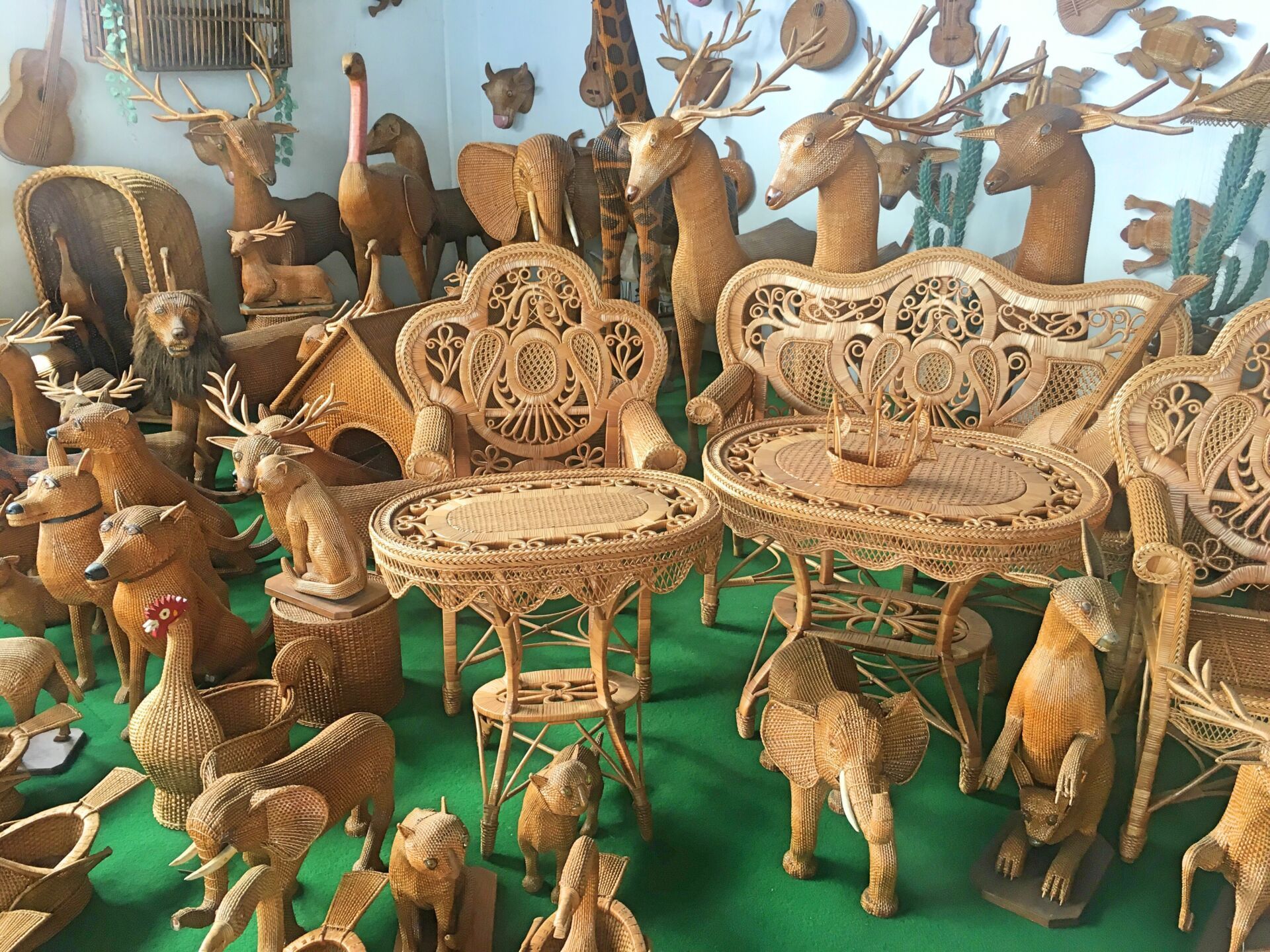If you go to Madeira, don’t be surprised if you’re suddenly surrounded by wicker objects wherever you go. You may find yourself drinking a coffee on wicker chairs, enjoying bread from wicker baskets, or riding down a hill on a traditional wicker sled. Despite the apparent overabundance of wicker objects, the art of creating objects out of vime is a dying one.
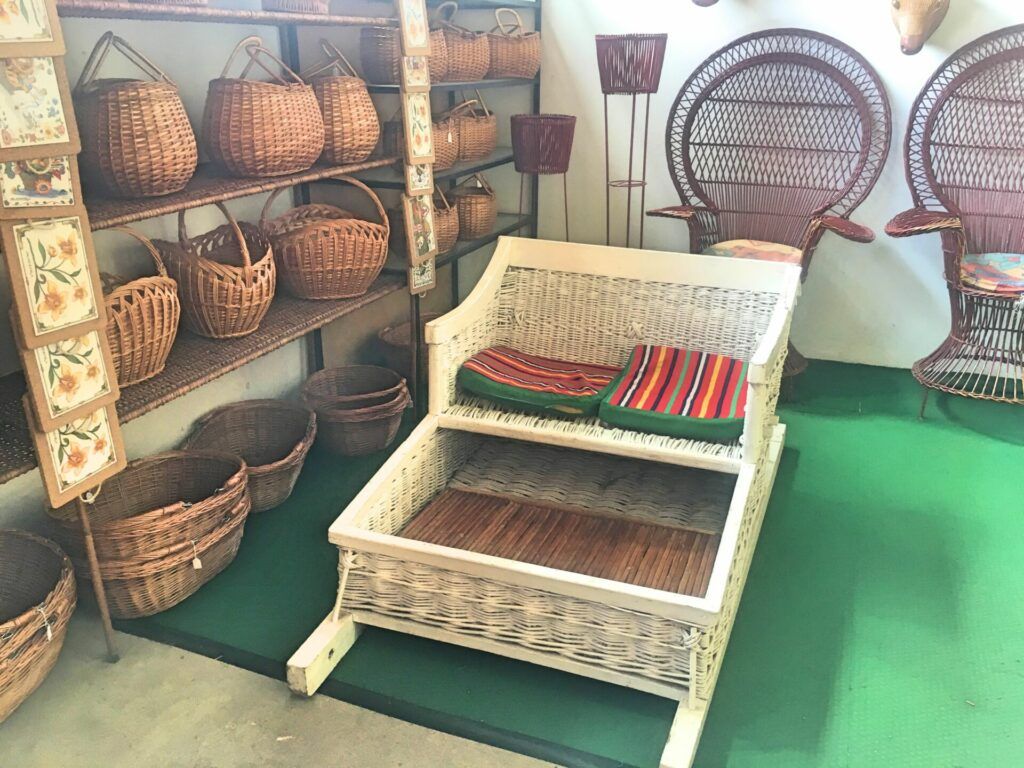
Wicker-making in Madeira is a tradition that dates back to 1850. After the willow is cut, peeled and dried, the canes need to be treated. This is done by boiling them. The boiling treatment is what gives the canes their malleability and brown color.
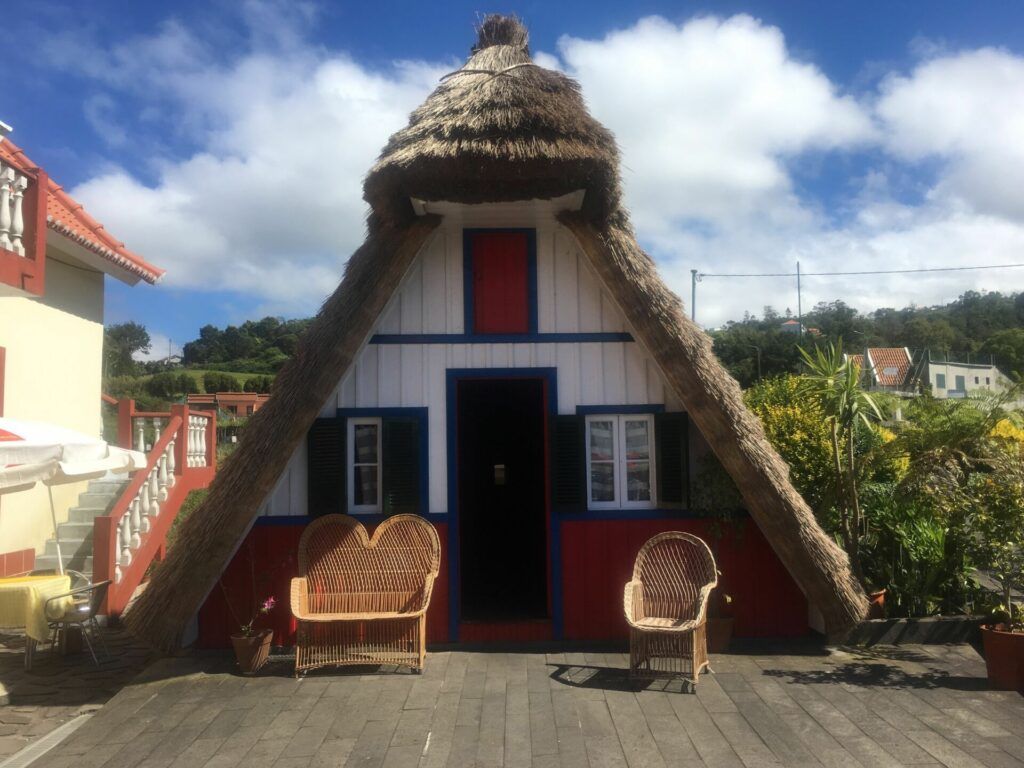
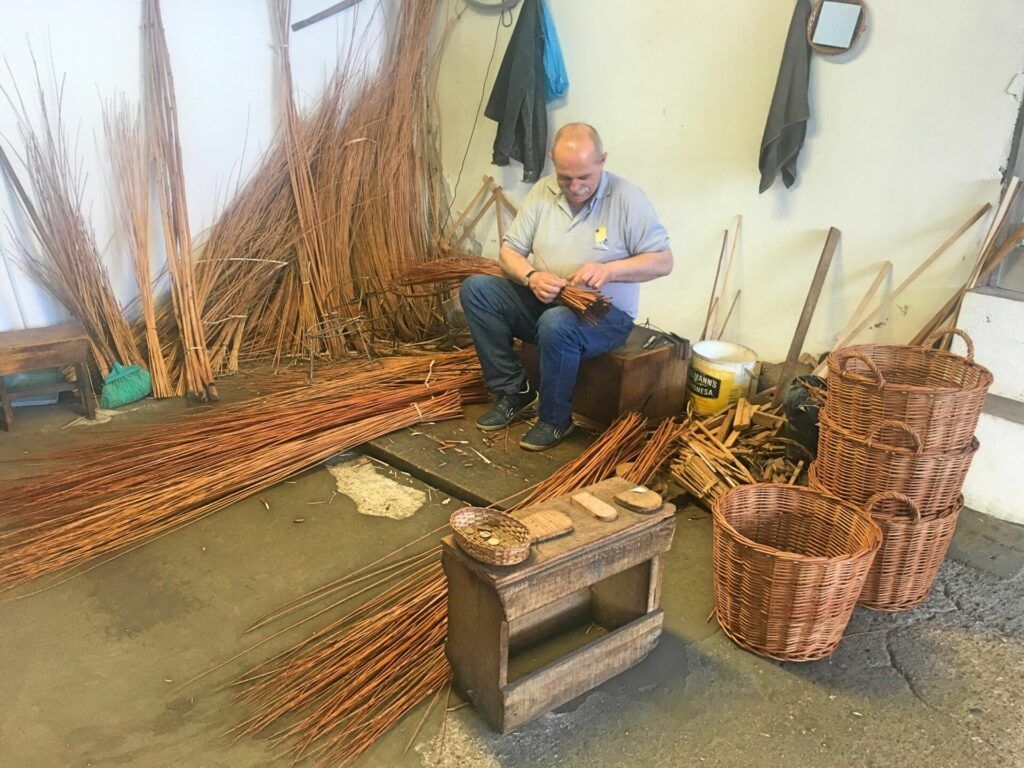
Nowadays, there are only a handful of artisans that make wicker products in Madeira. You can find them at the Café Relógio, in the town of Camacha, where their workshop is. The shop has countless wicker creations which you can buy and take home with you. Here, you will find baskets for every purpose: food baskets, magazine holders, serving trays, picnic baskets, and hanging baskets. You can even pick up baskets for Madeiran poncha – the region’s specialty alcoholic beverage. Traditionally, Portuguese children take wicker baskets to school instead of plastic lunchboxes. I remember mine perfectly! They had to be big enough to carry a thermos in it with hot food (no sandwiches!). The gift store also has plenty of other non-wicker gifts on sale, but it’s the wicker items that really make this store unique.
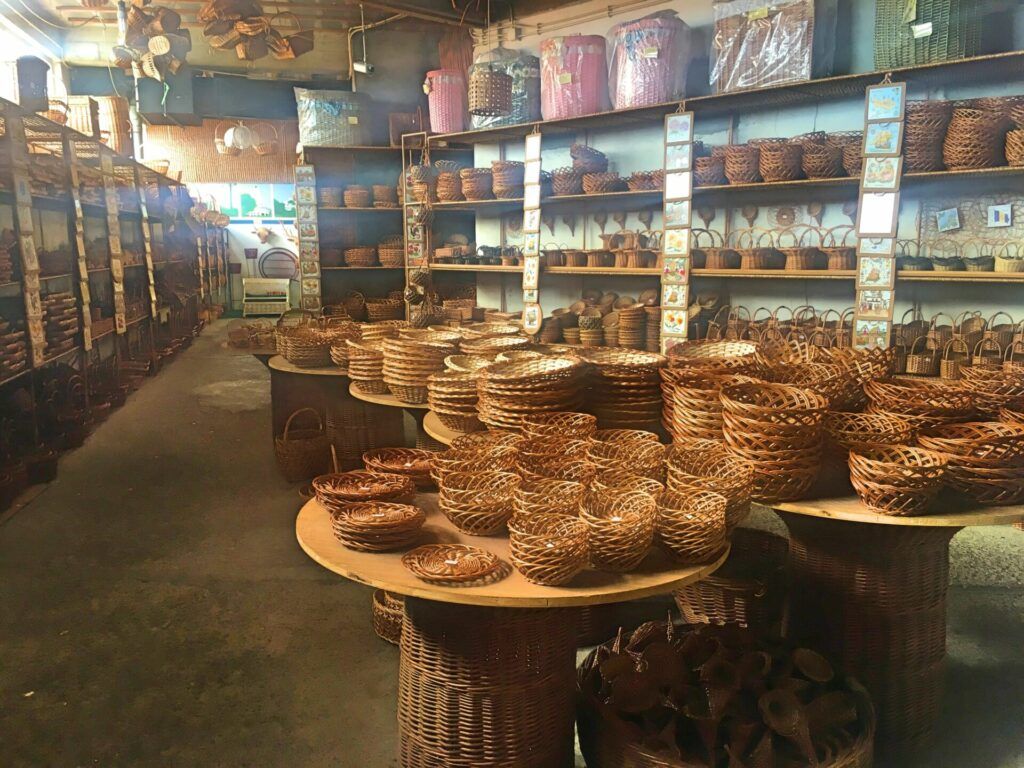
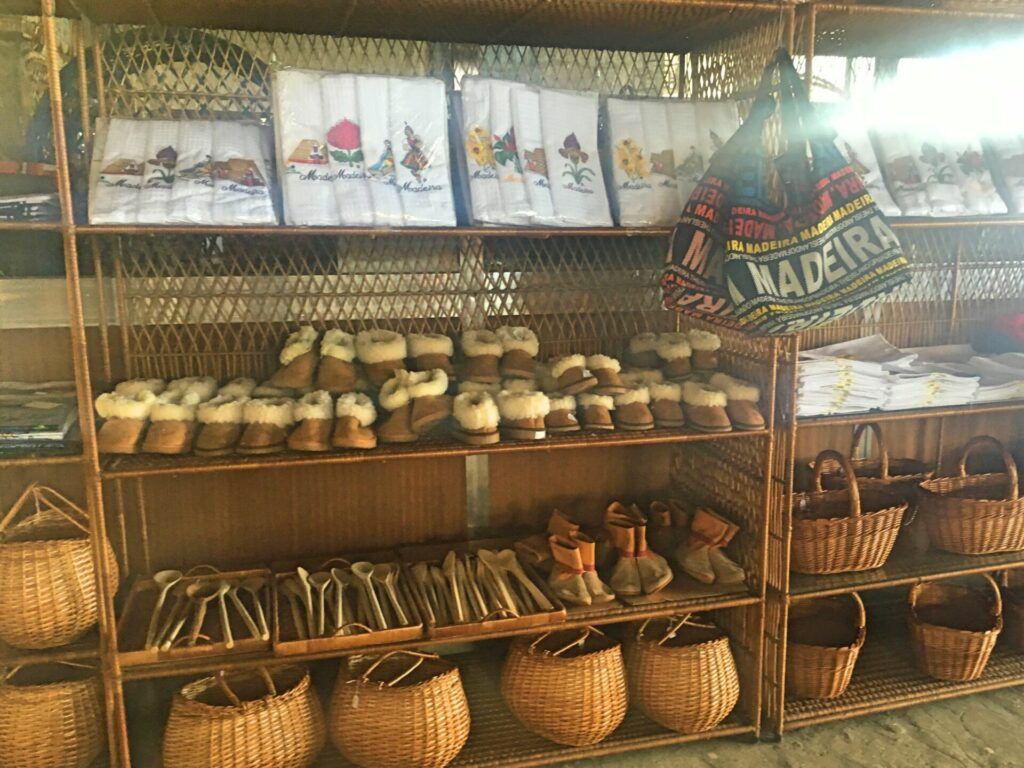
If you make your way down the stairs, you’ll find a menagerie of wicker animals of all shapes, sizes and habitats – from elephants to gazelles to kangaroos (you have to take back that wicker cat for your best friend who is obsessed with cats!). You will also come across a huge wicker caravel, the S. Lourenço, named after the caravel on which João Gonçalves Zarco (one of the original discoverers of the island) sailed to reach Madeira. It’s the most impressive piece of wicker I guarantee you’ll ever set eyes on!
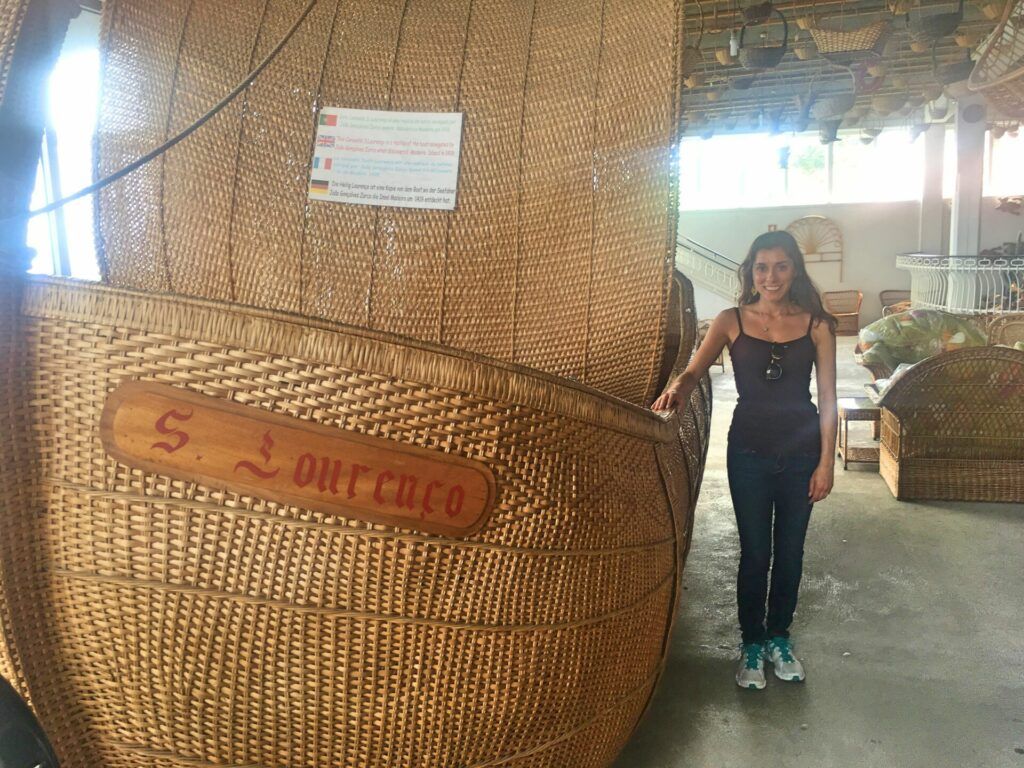
If you keep going down, you’ll reach the artisan’s workshop, where they create all the items you’ve seen on your trip. Watching them work is really interesting and it’s impressive how quickly they can weave the wicker. There are fewer than 10 people in Madeira who still do this work today. With the help of tourists and exports, they can (hopefully) continue this work. It would be such a blow to local culture if this type of craftsmanship were replaced by cheap, “made in China” replicas – Madeira would lose one of its biggest trademarks. Even though these items aren’t expensive, the replicas are still cheaper (but you get what you pay for and it’s hardly surprising when they don’t last as long).
So if you’re in Madeira, be sure to visit the Café Relógio and its gift shop. Oh, and don’t forget to bring extra space to take back a souvenir or two…
